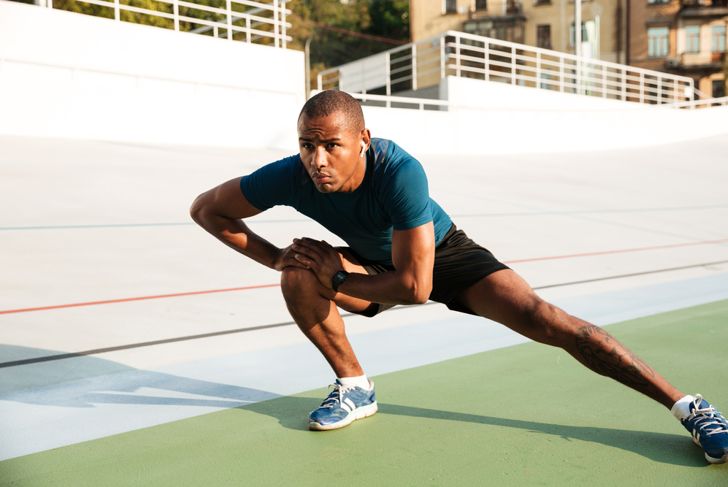Sprinting is about more than running faster. It multitasks by improving cardiovascular health, increasing stamina, and burning calories. Incorporating sprinting into an exercise routine can deliver many benefits, but it is not a one-size-fits-all activity, and there are things to consider before taking on this intense exercise. Everyone should consider technique, risks, and other factors before committing to sprinting.
Benefits of Sprinting
Sprinting regulates fat-burning hormones by increasing their production and maintaining these elevated levels for an extended period.Because sprinting is anaerobic (like weight lifting but unlike jogging), it is also beneficial for people interested in building muscle. The increased strain combined with the use of many muscles at once results in the growth and stamina of muscle cells.
Ideal Candidates for Sprinting
Adding sprints to a workout addresses many fitness goals at once. The first and most common is the desire to burn off excess fat. Sprints are tailored to weight loss much more than steady-state long-distance jogging or running. As mentioned, sprinting is also good for building muscle, so it’s often combined with weight training to increase body mass.People interested in strengthing or toning their mid-section should also consider sprinting. Apart from toning the thighs and calves, building up power and translating it into speed uses the core muscles. As a result, the abdominal and back also receive a total workout from sprints.
Preparing for Sprinting
Sprints can be intense, and people should consider this when adding them to an exercise routine. For beginners, it is common to overdo it and fatigue the muscles. Beginners and seasoned runners alike should make sure to warm up their muscles through dynamic stretching that focuses on the hamstrings, calves, and quadriceps.The next step is to do a short sprint and gauge the level of muscle fatigue. Experts do not recommend sprinting at full strength, as this can create complications later on. After a short sprint (5 to 15 seconds) it is best to rest for 30 seconds or more before attempting another sprint. The slow start will help the sprinter prepare their body for more intensity later on.
Types of Sprinting
The beginner sprint workout highlighted above revolves around short sprints and long rest times. These can range from five to fifteen-second sprints with thirty seconds to an hour of rest time.A hill sprint workout requires the runner to sprint on an incline, which improves form while building more muscle.Pyramid-style training consists of increasing the length of sprint time while reducing rest time. After ramping up the speed, the sprinter does the same process in reverse. This is suitable for warming up and cooling down.
Sprinting technique
Sprinting and running techniques vary. The main factors to consider are posture and force production. The correct posture for sprinting requires a neutral pelvis and for the sprinter to position their striking foot underneath their center of gravity. Upright posture is essential because leaning forward can move the rest of the stance out of position.With the correct posture, force production can take care of the rest. The more vertical force you produce with each step, the faster your sprint becomes.
Ideal Timing for Sprinting
Sprinting is best done after the initial warm-up of the workout. At this time, the muscles are stretched out but are not fatigued, like they could be if you did a different kind of workout first. This can help prevent painful muscle pulls. Additionally, there is less chance of muscle failure at this stage due to their rested state.
Worst Timing for Sprinting
Many experts advise against sprinting after a jog. This can seem counterintuitive because jogging warms up the muscles, leading us to assume that a light run is beneficial before a sprint. However, jogging or running can have the opposite effect and create an additional strain on the hamstrings. This can be particularly problematic for beginner sprinters.
Potential Risks from Sprinting
Sprinting requires the fast-twitch muscles of the legs to use their maximum contraction. As a result, this exercise carries a greater risk of muscle strain than running and jogging. Another risk is joint strain. By exerting as much force as possible with each stride, sprinting creates more impact on the joints. Regular stress and impact can cause damage.
Preventing Injuries from Sprinting
It is best to avoid sprinting every day. Taking rest days or doing other workouts in between intense runs lowers the risks of muscle fatigue and failure. It is also essential to keep the correct sprinting posture to minimize injury to the joints. Avoid running heel-first, as this can increase the impact to the knee joint.
Complications from Sprinting
Hamstring strains are the most common injuries among regular sprinters. This type of injury generally requires a long and complex rehabilitation process and can be a source of chronic pain. Joint failure from using the incorrect technique is another consideration. Being mindful at every step of the process — warm up, during, cool down, and recovery — will significantly reduce the risk of injury.

 Home
Home Health
Health Diet & Nutrition
Diet & Nutrition Living Well
Living Well More
More




















